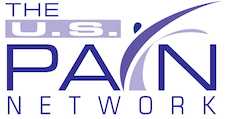What does Research show on Spinal Cord Stimulator Implants?
Spinal cord stimulation (SCS, neuromodulation) is the delivery of electrical current impulses directly to the spinal cord. This therapy is used by thousands of people with chronic pain. Because the technology continues to improve, researchers are still investigating spinal cord stimulator implants.
Studies on High Frequency SCS
Neuromodulation usually involves electrical current delivered at a frequency of 50 hertz (Hz). A new study now shoes that SCS should be delivered at a higher frequency of 5,000-10,000 Hz. This higher frequency used in rat subjects is shown to block pain hypersensitivity. This study was conducted at Johns Hopkins University in Baltimore, Maryland.
Several studies have been performed with human participants investigating the clinical benefits of high frequency SCS. One researcher noted a definite rationale for this new approach, stating that study findings could bring a better understanding of neurostimulation that would allow doctors to have more alternatives for treatment.
Another study studied the analgesic and electrophysiological effects of SCS in rat subjects. The researchers found that the rats’ withdrawal threshold to mechanical stimuli would fall after suffering nerve damage, which indicated hypersensitivity. Then, they would recover the mechanical stimuli after daily SCS treatment over 3 days. It was noted that high frequency stimulation increased the withdrawal threshold further and faster than lower frequencies. They recorded nerve fiber conduction properties and found that mechanically sensitive neurons (nerve cells) were less active after high frequency stimulation.
Based on several study results, researchers hypothesize that diminished pain occurs related to the gate control theory. With this theory, the pain experience arises from the net total of sensory input from several modalities that go through the “gate” of second-order neurons. When input from mechanically sensitive A-fibers is amplified, the pain is then reduced. Another mechanism thought to contribute to effectiveness of SCS is activation of higher brain areas that control pain modulation.
Research on Cost Effectiveness of Neuromodulation
A recent clinical study shows that costs of spinal cord stimulator implants are recovered due to the decreased needs for medical treatment in patients with chronic pain. In the study, researchers follow a set of pain patients for six years. They found that the mean hospitalization costs climbed before the patients received SCS to manage their chronic conditions. Notably, the costs feel in the three years following the spinal cord stimulator implant procedures for these patients.
The study followed 40 patients who received stimulator implants from 2008 to 2013. The study was conducted in Montreal and presented at the Montreal scientific congress. The total mean expenditures for these patients dropped 29% overall, when all 3 years before treatment and 3 years after were compared. Pharmaceutical costs went down 31%, and non-pharmaceutical costs decreased 29%.
Study about Improvement in Functional Outcome
In a study involving 4 people with paraplegia were able to voluntarily move previously paralyzed muscles due to electrical stimulation of the spinal cord. The study participants had been totally paralyzed for more than two years. After SCS, they were able to voluntarily flex their knees, ankles, and toes while the stimulator was active. These movements were improved over time using physical therapy. This study was funded in part by the Christopher & Dana Reeve Foundation and the National Institutes of Health (NIH).
This study shows that SCS success can involve improvement in functional outcome as well as pain perception. SCS permits patients to resume activities of daily living and work, pursue domestic tasks, and engage in social activities. Researchers claim that SCS and physical therapy combined can change the prognosis for people with paralysis, even years after the initial injury.
Resources
Kumar K, Caraway DL, Rizvi S, & Bishop S (2014). Current Challenges in Spinal Cord Stimulation. Neuromodulation: Technology at the Neural Interface, 17: 22 DOI: 10.1111/ner.12172
Linderoth B & Meyrson BA (2010). Spinal cord stimulation: exploration of the physiological basis of a widely used therapy. Anesthesiology, 113(6), 1265-1267.
National Institutes of Health (2015). Spinal cord stimulation helps four patients with paraplegia regain voluntary movement. Retrieved from: https://www.nih.gov/news-events/news-releases/spinal-stimulation-helps-four-patients-paraplegia-regain-voluntary-movement
Perruchoud C, Eldabe S, Batterham AM, et al. (2013). Analgesic Efficacy of High-Frequency Spinal Cord Stimulation: A Randomized Double-Blind Placebo-Controlled Study. Neuromodulation, 16(4), 363-369.
Tiede J, Brown L, Gekht G, et al. (2013). Novel Spinal Cord Stimulation Parameters in Patients with Predominant Back Pain. Neuromodulation, 16(4), 370-375.
Van Buyten JP, Al-Kaisy A, Smet, et al. (2013). High-Frequency Spinal Cord Stimulation for the Treatment of Chronic Back Pain Patients: Results of a Prospective Multicenter European Clinical Study. Neuromodulation, 16(1), 59-65.



